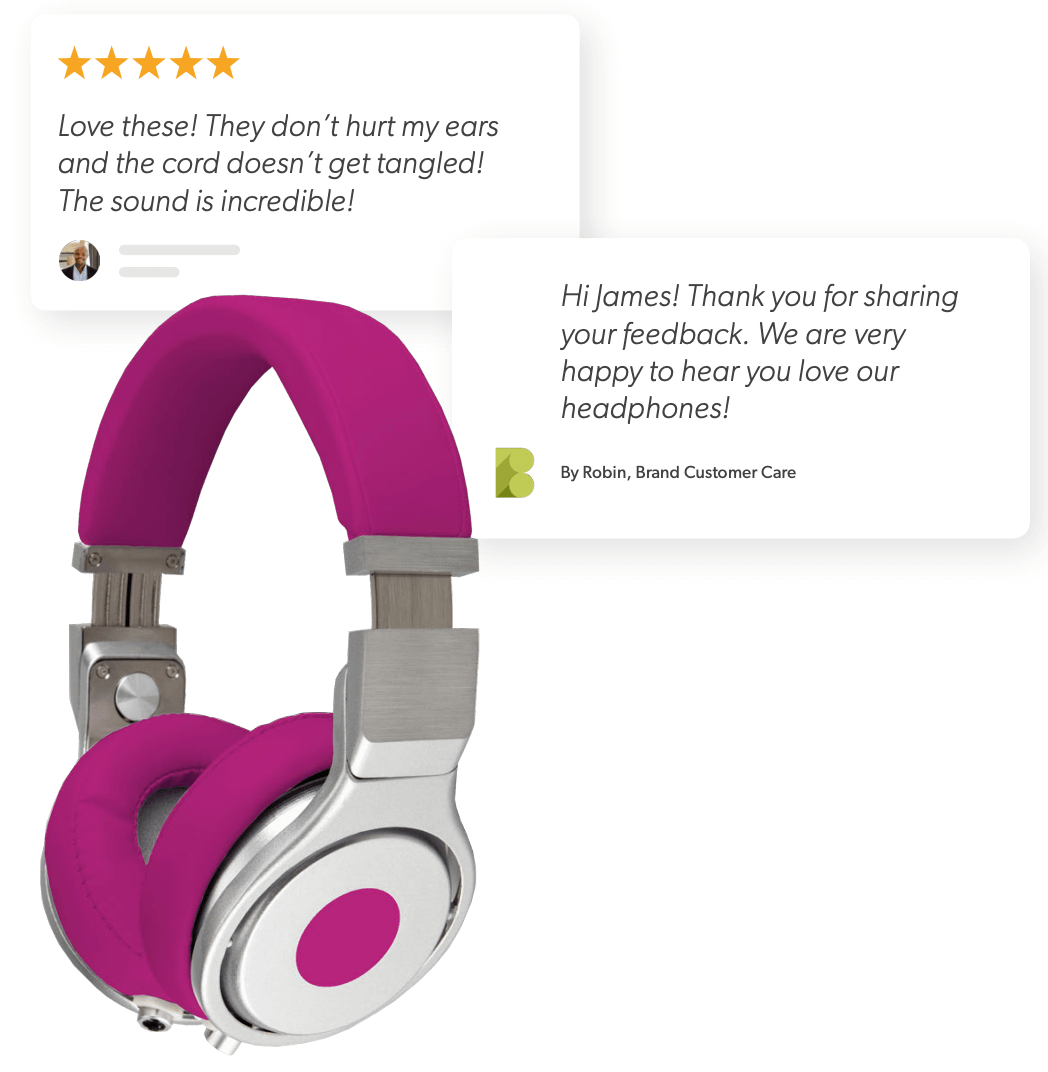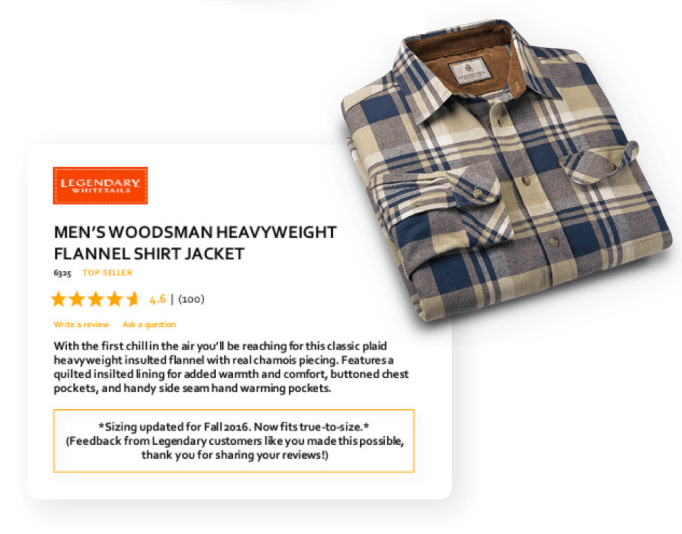
Responding to positive reviews can feel somewhat illogical. While replying to negative reviews makes sense (because you want to turn a negative into a positive) there’s a bias to leave positive reviews as they are. Your customer has purchased your product and left you a glowing review. Job done right? Wrong.

Ratings and reviews, both positive reviews and negative, have become an integral part in the shopper journey. Consumers today are more influenced by their peers than they are by your brand. They want to know what fellow shoppers say about your products, not what you say about your products, so they’re turning to reviews en masse — 89% of shoppers now consult reviews before making a purchase
Additionally, search engines have adopted reviews as a crucial part of their algorithms for determining how results are ranked. In fact, online reviews account for more than 15% of how Google ranks results.
With all these eyes on the number of stars, it’s critical for brands to pay attention and respond to reviews quickly, thoughtfully, and authentically. Regardless of whether a review is positive or negative, responding to reviews creates an opportunity to deepen a brand’s connection not only with existing customers but with future customers too.
Many are focused on how to respond to negative reviews, but what about positive reviews? Is it really necessary to respond even when you have a happy customer? The answer is a resounding “yes” (most of the time).
It’s a golden opportunity to build relationships with existing customers who took the time to offer feedback and to show potential customers that you’re actively listening and care about your brand’s reputation. It also reinforces the quality of your brand to both retailers and search engines.
Why positive reviews matter
Reviews are at the center of the consumer to consumer marketplace we currently reside in. There’s few better sources to turn to when considering a purchase than a product review from your peers, which is why 88% of consumers use them when evaluating a product.
While negative reviews are important, positive reviews are what really make consumers hit add to cart. According to our survey of 30,000 global shoppers (above), 82% said a product needs between 4 and 5 stars. The majority of shoppers want to see positive reviews. All you have to do next is respond to them.
How to respond to positive reviews
Here’s a few best practices to keep in mind when you’re responding to positive reviews, with examples.
1. Be personal and authentic
We’re in the midst of an authenticity movement. So when it comes to engaging with brands online, consumers appreciate authenticity. Take the time to show them the “human” behind your brand by acknowledging them by their name or nickname.
And above all, avoid copying and pasting canned “thank yous,” which make you look more robot than human. Find alternate ways to mix it up.
“Thanks for taking the time to share your positive experience with us, Albert…”
“We so appreciate serving customers like you, Sheila. Thank you for the review…”
2. Let some 5-star reviews stand on their own
While it’s beneficial to your brand’s visibility and search ranking to respond to positive reviews in a timely and authentic way, there’s no need to respond to every 5-star review. This will clutter your feed and may have the unintended effect of turning readers off. When you do choose to respond to a 5-star review, be as concise, personal, and genuine as possible.
“Thanks for your kind words, James. We’re so happy to hear you love the [product].”
3. Avoid excessive upselling or marketing
It’s tempting to want to sell more to an already satisfied customer, but consumers can see through this tactic and may find it presumptuous or greedy. Instead, focus on what made the customer happy in the first place.
“Tina, thanks so much for your feedback and for taking the time to share the photo. It looks like your project turned out great!”
4. Remember your “other” audience
A good rule of thumb when responding to positive reviews is to remember that every response to a review — whether positive or negative — will be seen by many others beyond the person who originally posted it. Generally, by someone who is considering buying your product.
Always ask yourself “Is my response providing value to this customer and future customers reading my answer?” In addition, consider that retailers are also keeping tabs on the way the brands they sell respond to customers. Because they often have limited shelf space, they factor your responses (or lack thereof) into their inventory decisions.
“Thanks for the positive feedback, Alicia. We here at [brand] have made customer satisfaction our top priority, and we appreciate all of our fans.”
5. Keep an eye out for valuable feedback
Be a careful reader. Like with negative reviews, positive reviews often contain a hidden wealth of information that can help you further improve your product or service or validate improvements you’ve already made.
“So glad you love your new [product], Tom. Feedback from customers like you made this possible. Thanks for sharing your review.”
It’s not just a “nice to do” either. According to our annual global research, Shoppers want to see businesses use their reviews, both positive (25%) and negative (38%), to make product improvements.

And brands are starting to take note. Lemi Shine, maker of safe household cleaning products, for example, leverages the content in their reviews to uncover improvement opportunities to ensure successful product launches.
“We regularly comb through reviews, share them internally, and make modifications to the messaging or tweak the product formulation in response to issues or needs. Occasionally, we find some hidden gems,” says Josh Emshoff, Associate Brand Manager, Lemi Shine.
Respond to positive reviews at scale with Connections
Many brands and retailers believe the sky is falling when receiving a negative review and create an operationalized process to close the loop with consumers. But they don’t pay the same attention when it comes to responding to positive reviews.
There’s just as much value in a 4- or 5-star review, and you should actively rally around the opportunity to turn a happy customer into (not only) a repeat customer but also a brand advocate for life.
Efficiently being able to respond to positive (and negative) reviews that come through multiple retail sites and channels can be tricky. It’s beneficial to use a centralized portal, like Bazaarvoice Connections, so you can quickly manage all customer feedback in one place and at scale. Sign up for free here.
Now that you know the best practices for responding to positive reviews, learn how to respond to negative reviews and online feedback below.




